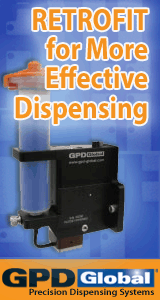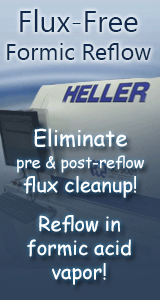Printed Circuit Board Assembly & PCB Design Forum
SMT electronics assembly manufacturing forum.
- SMTnet
- »
- Electronics Forum
- »
- Noclean soldering to gold
Noclean soldering to gold
![]() Hello all, I am in the process of converting our facility ...
- Dec 03, 1999
by
Hello all, I am in the process of converting our facility ...
- Dec 03, 1999
by
![]()
![]() Hi Russ,
I have a similar situation.
I have been told that...
- Dec 06, 1999
by
Chris May
Hi Russ,
I have a similar situation.
I have been told that...
- Dec 06, 1999
by
Chris May
![]()
![]()
![]() Hi Russ,
assuming that only your flux changed and the PCB-f...
- Dec 06, 1999
by
Wolfgang Busko
Hi Russ,
assuming that only your flux changed and the PCB-f...
- Dec 06, 1999
by
Wolfgang Busko
![]()
![]()
![]() Russ: Three things:
1 Wolfgang is 100% correctamundo abo...
- Dec 06, 1999
by
davef
Russ: Three things:
1 Wolfgang is 100% correctamundo abo...
- Dec 06, 1999
by
davef
![]()
![]()
![]() Christopher, in response to your request concerning if I h...
- Dec 06, 1999
by
Christopher, in response to your request concerning if I h...
- Dec 06, 1999
by
![]()
![]() Hi Russ,
there�s something I don�t understand about the mea...
- Dec 07, 1999
by
Wolfgang Busko
Hi Russ,
there�s something I don�t understand about the mea...
- Dec 07, 1999
by
Wolfgang Busko
![]()
![]()
![]() Wolfgang, I appreciate your continued feedback! The main ...
- Dec 07, 1999
by
RDR
Wolfgang, I appreciate your continued feedback! The main ...
- Dec 07, 1999
by
RDR
![]()
![]()
![]() I can't figure out why everyone is plating everything with ...
- Dec 13, 1999
by
I can't figure out why everyone is plating everything with ...
- Dec 13, 1999
by
![]()
![]() Hi Dennis
The gold plating on a circuit board is present to...
- Dec 13, 1999
by
John Thorup
Hi Dennis
The gold plating on a circuit board is present to...
- Dec 13, 1999
by
John Thorup
![]()
![]()
![]() Russ,
Regarding your no clean soldering to gold. We have ...
- Dec 13, 1999
by
Travson
Russ,
Regarding your no clean soldering to gold. We have ...
- Dec 13, 1999
by
Travson
![]()
Russ
- SMTnet
- »
- Electronics Forum
- »
- Noclean soldering to gold







